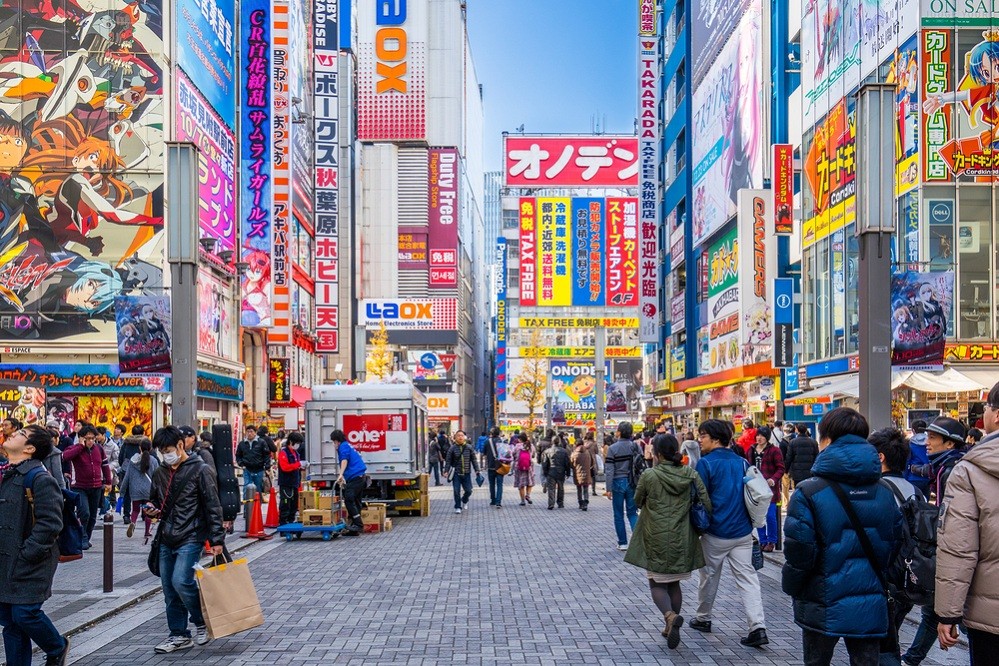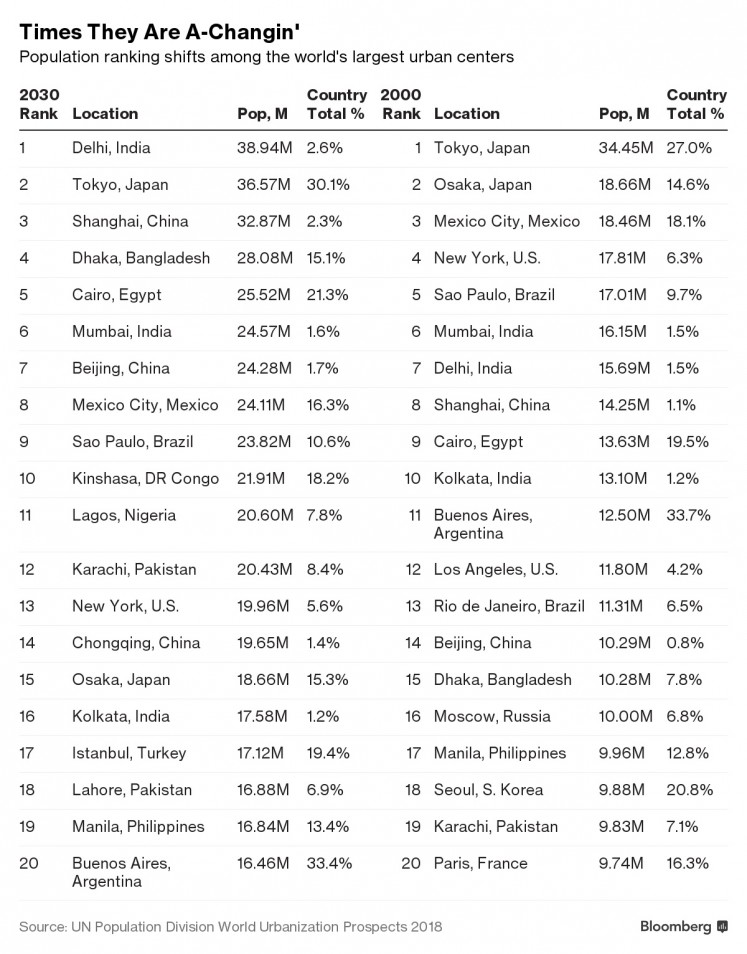Popular Reads
Top Results
Can't find what you're looking for?
View all search resultsPopular Reads
Top Results
Can't find what you're looking for?
View all search resultsTokyo’s reign as world’s largest city fades
As of 2018, Tokyo is still the world’s largest city with 37 million inhabitants, but it’s growth has plateaued and is projected to begin declining around 2020, while Delhi continues the ascend to become the most populous city in the world in 2028.
Change text size
Gift Premium Articles
to Anyone
Y
ears of low fertility, emigration, political strife, economic contraction and natural disasters have contributed to population losses in some global cities, according to data released by the United Nations. Most of the cities with falling populations are located in Asia and eastern Europe, such as Japan, Poland, Romania, Russia and Ukraine, where overall population sizes have been either stagnating or in decline.
As of 2018, Tokyo is still the world’s largest city with 37 million inhabitants, but it’s growth has plateaued and is projected to begin declining around 2020, while Delhi continues the ascend to become the most populous city in the world in 2028.
In the Land of the Rising Sun population declines are widespread. Between 2030 and 2035, 63 urban areas, out of a total of 1,800 in the world, with a population of 300,000 inhabitants or more in 2018, are expected to shrink. Of which, 33, or more than half of them are in Japan. By the end of the century there could be 50 million fewer Japanese than there were at its peak.
Read also: How to explore Tokyo on tight budget
Among the most populous cities in 2000, some will make a dramatic change by 2030. (Bloomberg/File)Looking at approximately one generation’s time from 2000 to 2030, the population of three industrial cities in China’s Yichun, in the northeast province of Heilongjiang, Youngstown in Ohio, United States and Hamhung, in the Hamgyong province of North Korean are expected to fall in size significantly.
Among the most populous cities in 2000, some will make a dramatic change by 2030. New York-Newark metropolitan area, will be pushed out of top 10. Paris, France, the only Western European entry in 2000, will place number 35 in 2030, with a forecast of 11.7 million people. Seoul, South Korea, with an estimated annualized growth rate of less than 0.1%, second lowest to Osaka, Japans negligible rate of growth will be pushed to No. 42 in 2030, a 24 place drop in rank.












